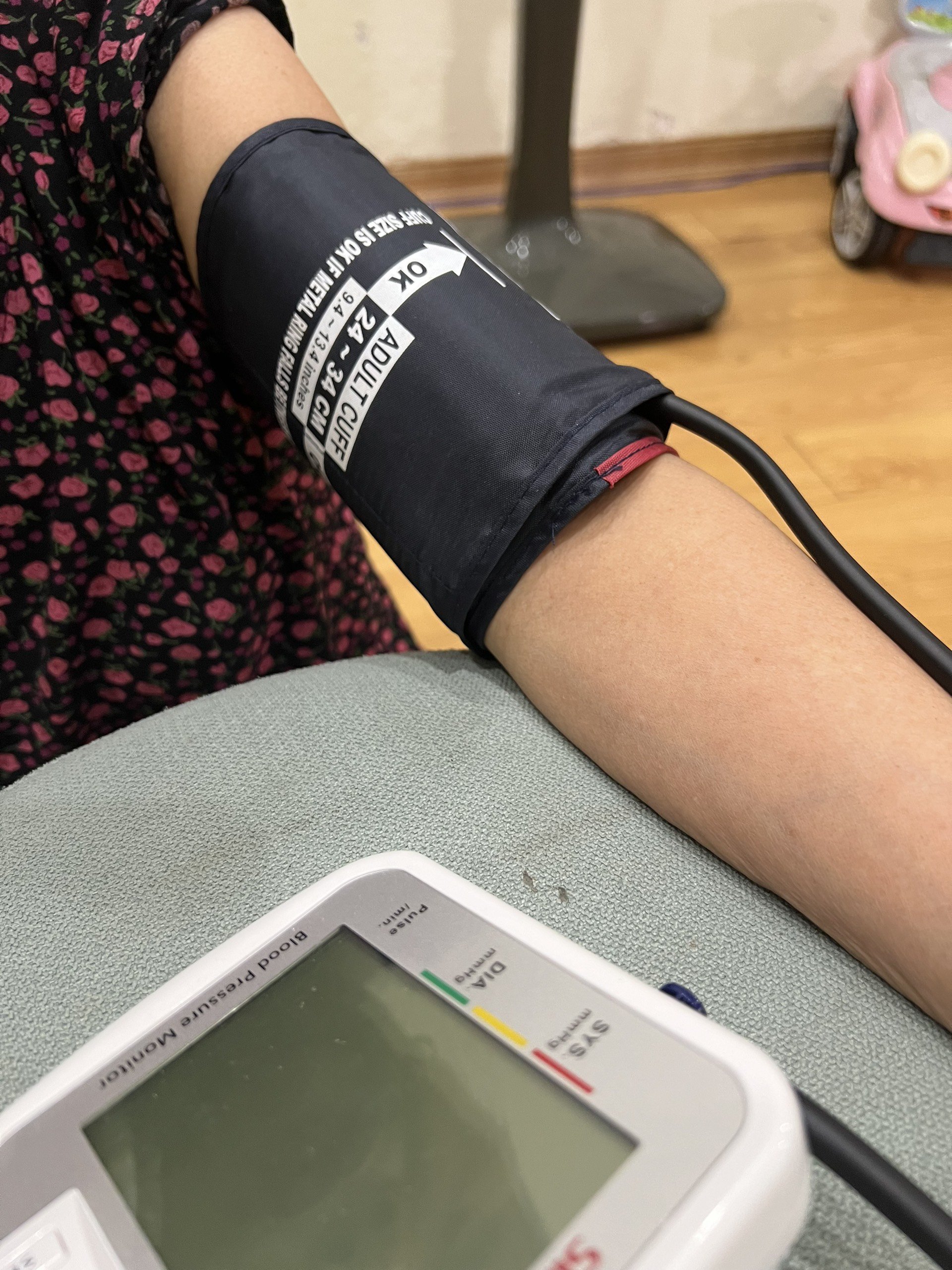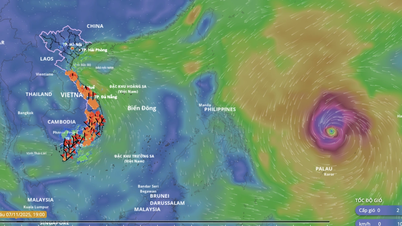Hypertension is known as the silent killer. According to experts, the rate of hypertension is currently up to 25% in Vietnamese adults (3 out of 10 people have the disease) and is on the rise to a red alert level.

Doctor Nguyen Thi Thu Hoai examines a patient with high blood pressure - Photo: BVCC
Signs of high blood pressure
According to Associate Professor, Dr. Nguyen Thi Thu Hoai - Director of the National Heart Institute, Bach Mai Hospital, high blood pressure is when systolic blood pressure is greater than or equal to 140 mmHg and/or diastolic blood pressure is greater than or equal to 90 mmHg.
When measuring blood pressure, the patient needs to be in a quiet and relaxed environment. In some special cases, to diagnose high blood pressure , it is necessary to use continuous blood pressure monitoring devices such as 24-hour blood pressure holter.
According to Dr. Hoai, although high blood pressure often has no obvious symptoms, some signs that may occur include:
- Headache: Usually in the morning, occipital or forehead.
- Dizziness, lightheadedness: Feeling of loss of balance, dizziness.
- Tinnitus, hearing loss: May be accompanied by a feeling of heaviness in the head.
- Palpitations, anxiety : Fast heartbeat, feeling restless.
- Shortness of breath: Especially when exerting or lying down to sleep.
- Redness, hot flashes: Especially when stressed or drinking alcohol.
- Nosebleeds: Although rare, they can occur.
- Blurred vision, decreased vision

Measure blood pressure to detect disease early - Illustration photo
Common complications of high blood pressure
Dr. Hoai said that complications of high blood pressure can develop slowly and silently if not diagnosed and treated properly. High blood pressure can cause many dangerous complications such as:
Cardiac complications : Heart failure, acute pulmonary edema, coronary artery disease (myocardial infarction, stable angina...), arrhythmia...
Complications in the aorta : Aortic dissection (thoracic, abdominal, pelvic aorta...), aortic aneurysm, aortic dilation...
Complications in the brain and cerebrovascular system : Brain disease due to high blood pressure , stroke (cerebral infarction, cerebral hemorrhage), atherosclerosis causing carotid artery stenosis, cerebral aneurysm.
Renal complications : Acute kidney injury due to hypertension , chronic renal failure, proteinuria, glomerular injury due to hypertension .
Eye complications : Changes in blood vessels in the fundus due to high blood pressure can cause hemorrhage, retinal vascular edema, and reduced or lost vision.
Peripheral arterial disease : Atherosclerosis of the limbs, chronic damage to the arteries of the lower and upper limbs...
"Complications of high blood pressure can also appear acutely and develop very quickly during a hypertensive emergency, and can be life-threatening if not detected and treated promptly, such as: acute heart failure, acute pulmonary edema, aortic dissection...
"If high blood pressure is not diagnosed and treated properly, it will lead to serious complications, even life-threatening," Dr. Hoai warned.
Why is blood pressure sometimes high and sometimes normal?
In fact, some patients have high blood pressure when they are examined at the hospital, but when they measure it at home, it is normal. Explaining this situation, Dr. Hoai said that normally, when a patient comes for a check-up, before conducting the test, the doctor will let the patient rest and relax for at least 10 minutes.
Then there is questioning and conversation to take medical history and help the patient's breathing to be calm and regulated after a period of movement.
However, in some special cases, it is necessary to measure blood pressure at home or continuously monitor blood pressure (for example, 24-hour blood pressure holter) to accurately diagnose hypertension .
One of the typical cases we often encounter is "suspected white coat hypertension ". White coat hypertension is a condition in which blood pressure is elevated when measured in the hospital or clinic in the presence of medical staff, but blood pressure measured at home or with continuous monitoring devices is completely normal.
Or the situation of masked hypertension is the condition where the patient has real hypertension , even with target organ damage, but it is not detected when measured at the clinic/hospital.
"In those situations, we will prescribe the patient to measure blood pressure at home or wear a 24-hour blood pressure holter. In addition, some diseases also require continuous blood pressure monitoring related to treatment, monitoring treatment such as postural or postprandial hypotension in treated or untreated patients.
In addition, evaluate resistant hypertension ; evaluate blood pressure control, especially in high-risk patients who have been treated; excessive blood pressure response to exercise... Depending on each condition, there will be a further treatment plan," said Dr. Hoai.
Source: https://tuoitre.vn/1-4-nguoi-truong-thanh-mac-tang-huyet-ap-dau-hieu-phat-hien-the-nao-20250207201053377.htm







![[Photo] Da Nang: Hundreds of people join hands to clean up a vital tourist route after storm No. 13](https://vphoto.vietnam.vn/thumb/1200x675/vietnam/resource/IMAGE/2025/11/07/1762491638903_image-3-1353-jpg.webp)



































































































Comment (0)